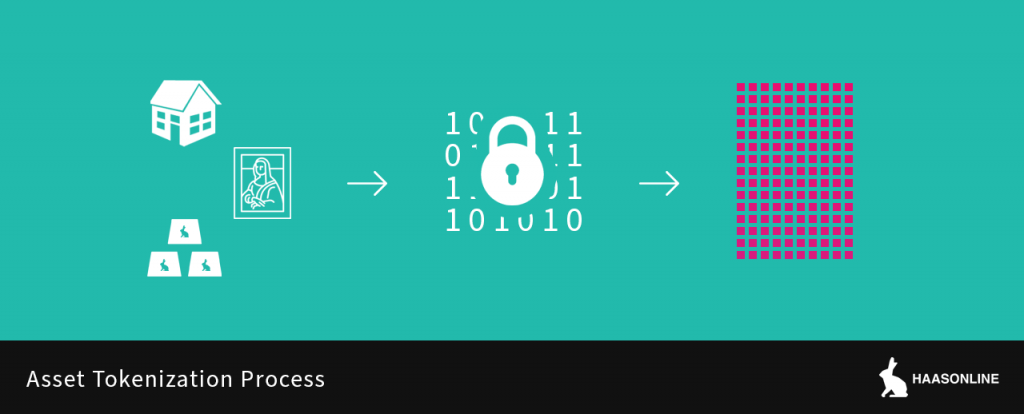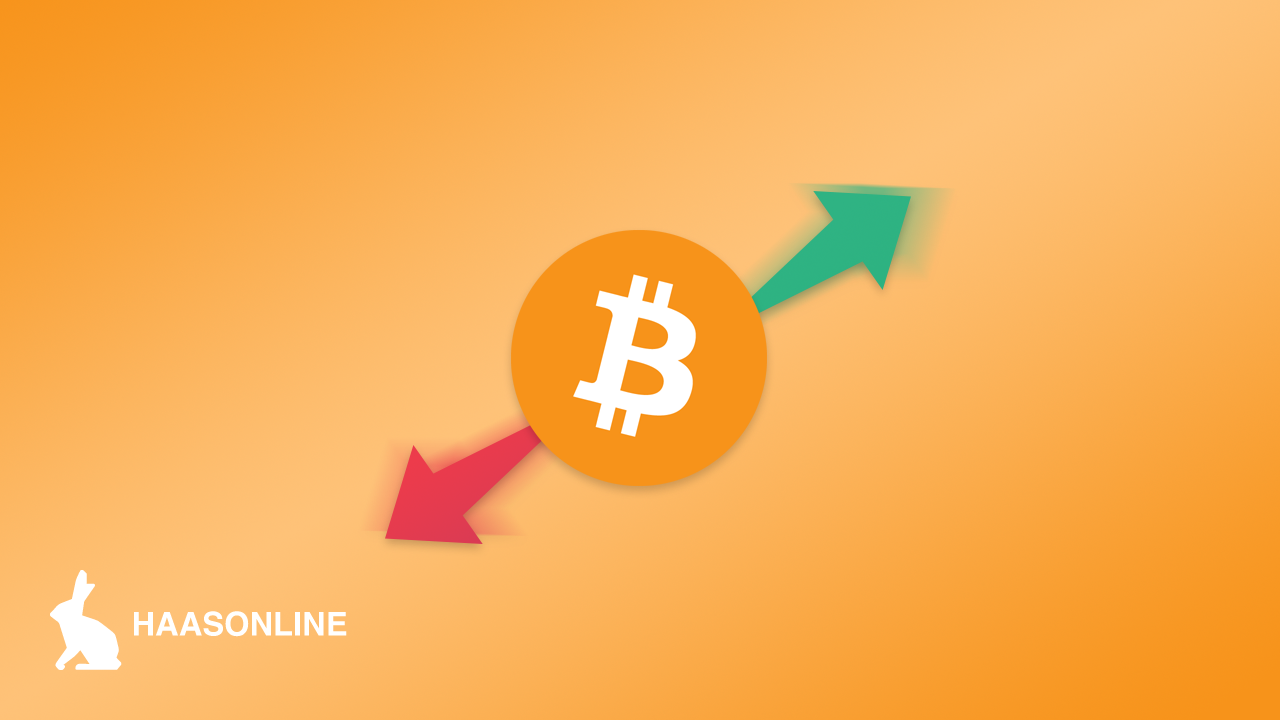What is asset tokenization?
A Brief History of Asset Tokenization
Asset tokenization may be a bit perplexing at first glance, but we’ll try to explain it in plain English as an improvement on something that has existed for a long time in traditional finance. If you’re familiar with what an NFT is, then you’re already on the right path.
In fact, trading with assets was one of the earliest business ventures of human civilization. People have been trading commodities, private equity, real estate, artworks, and precious metals for centuries. However, the investment industry has reached a point where the very materialization of such trades became complicated, expensive, and exhaustingly time-consuming. This becomes more noticeable when the trading process involves a physical transfer or cross-border legislation. Both incur multiple layers of intermediaries, a bunch of paperwork, and take weeks to settle.
At the same time, the blockchainThe blockchain is a digital ledger that records transactions in a secure and decentralized manner. Think of it like a shared spreadsheet that is constantly... industry is quickly reshaping the world of finance, bringing the apparent advantages of a decentralized economy: immutability, transparency, and a distributed structure. Even though the blockchain was primarily created to generate cryptocurrencyCryptocurrency is a digital or virtual currency that uses cryptography for security and operates independently of a central bank. Cryptocurrencies use decentralized technology called blockchain..., it has been gradually applied in various segments of global business. The tokenization of assets is one of the most notable instances that divert investors towards exbracing new products from the blockchain ecosystem. Let’s see how real assets can be converted into digital assets using the process of asset tokenization.
So… What Is Asset Tokenization?
Asset tokenization is a method of digitizing both tangible and intangible assets by converting them into digital tokens. The newly converted tokenized asset is stored on a blockchain network. What is important to remember is that one asset (e.g. an apartment or painting) is not the same as one tokenA cryptocurrency token is a digital asset that is created and managed on a blockchain network. Tokens are usually created using existing blockchain platforms, such.... Through tokenization, the asset is broken down into hundreds or many thousands of smaller pieces that make up the entirty of the token’s equity.
So, once people have their desired personal assets tokenized and recorded on a blockchain ledgerIn cryptocurrency, a ledger is a digital record of all transactions that have occurred within a particular blockchain network. It includes information such as the..., they can either store or sell the assets on one of the various marketplaces, either fully or partially, or simply transfer them to other users.
Tokenization is closely associated with the concept of STO (Security Token Offering). STO platforms allow users to digitize their assets and convert them into a certain number of tokens. Then, the owners will need to create their so-called STO campaign and offer the tokenized assets to anyone who wants to invest.
How Does Asset Tokenization Work?
The best way to understand the process of tokenizing any asset is through an example. Let’s start from a real estate investor’s point of view. Imagine you want to invest in a property with an initial capital of $4,000. According to the industry standard, you can technically buy several square feet of the property, but things don’t go that way in today’s real estate industry. Now, let’s reverse the position. You have a property worth $250,000, but you want to cash out $30,000 equity, and logically, you can’t an evenly divided portion of the property.
This is exactly where asset tokenization comes to play. Your $250,000 property can be turned into 250,000 tokens, with each token representing a 0.0005% share of the complete property value. When your asset is converted into tokens, they are issued on a blockchain network that supports smart contracts (e.g. EthereumEthereum is a type of cryptocurrency that is similar to Bitcoin, but with some important differences. One of the key differences is that Ethereum is...). When someone buys a token, it means that they obtain a 0.0005% ownership of your property. If any investor decides to buy 125,000 tokens, then they would technically own half of your property.
By its very nature, blockchain is an immutable ledger ensuring that users’ ownership can’t be modified or deleted, regardless of whether or not the asset is registered within a government-run institution.

Benefits of Assets Tokenization
This trend is becoming highly attractive among a great number of investors, owners of valuable assets, and startups. As of February 2021, the market cap of tokenized assets is showing a disruptive upward tendency. Certainly, there are strong reasons behind it. You can already feel how tokenization contributes to low costs and faster transactions, but let’s discuss the benefits in detail.
Higher Accessibility and Liquidity
Physical obstacles are easily overcome with the decentralized model of blockchain technology that allows users to tokenize their assets or invest in tokens from anywhere in the world, at any time of the day. Furthermore, the list of “tokenizeable” assets is highly extensive, including substantially liquid ones such as valuable pieces of art, real estate, vehicles, etc. Hence, removing the multiple burdens and delays arising from geographical restrictions directly contributes to providing greater liquidityLiquidity refers to the ability of an asset to be easily bought or sold without affecting its market price. In the context of cryptocurrency, it....
Transparency
Blockchain is a public ledger that allows access to all participants out there. From a user’s perspective, transparency is of crucial importance when handling finances. The blockchain network enables users to track the entire transaction history, verify assets’ origin, and watch the entire transaction flow.
Immutability
All information stored on the blockchain ledger is immutable. More particularly, once the data is recorded and verified on the network, nobody can change or manipulate it. The data is accurately updated in real time.
Partial Ownership
The tokenized asset can be seamlessly divided into as small parts as it’s necessary. The opportunity to split the asset enables a broader investment audience, which adds to the asset’s liquidity.
Cost-Effectiveness
Blockchain technology excludes any interference from a third-party intermediary since both participants in the transactions settle the terms of the transaction independently. This significantly reduces the intermediary costs from multi-layer provider services. On top of this, transactions can be completed within minutes.
What Types Of Assets Can Be Tokenized?
As we have already implied, all kinds of assets can be tokenized, ranging from art and real estate to precious metals and even digital assets like securities. Here, we’ll focus on the most applicable examples:
Real Estate Tokenization
Blockchain and the real estate industry have been closely related in terms of using smart contracts to reduce intermediaries and costs. According to the research by Cushman & Wakefield, a leader in the industry, the most prosperous use cases of the blockchain network will be demonstrated in the tokenization of assets.
As tokenization fractionalizes ownership, real estate will become more accessible to a wider base of investors and available on various types of virtual marketplaces, reducing the initial barriers and disputes between buyers and sellers.
Just for information, the first apartment tokenized on the Ethereum blockchain was a deluxe Manhattan condo of $30 million in 2018.
Gold Tokenization
The benefits of tokenizing gold are evident in the reduced level of bureaucracy while storing or transferring gold, which has been a leading store of value for a long time. Furthermore, the immutable nature of blockchain prevents selling the ownership to multiple buyers.
In general, trading tokenized gold is just as convenient as trading cryptocurrency. There are a lot of existing coins backed by hard gold, with a value corresponding with the current gold price. These include PMGT, DGX, Meld Gold, and XAUt.
Art Tokenization
Apparently, the art market hasn’t modernized its bureaucratic business model for ages, leading to considerable barriers as concerns transparency, liquidity, and copyrights.
The tokenization of artwork will possibly solve these obstacles and unlock the art market for the general public. Art tokenization is also a systematic method of developing an immutable archive of copyright records providing liquidity at lower costs.
Monart and Maecenas are currently the most popular marketplaces for tokenized art. The first encourages users to invest in prospective artwork while the latter enables artists to tokenize their pieces of work.
Final Thoughts
The utility of tokenization seems to be endless. This global phenomenon has already entered various industries, from finance to real estate, and has even spiked the attention of investors in the entertainment business, music, and sports. However, there are certain challenges this decentralized approach is still facing, mainly as a result of lack of regulation.
In the years to come, the need for a general framework on cross-border mechanisms of interpretation will become more apparent. Moreover, tokenization lacks a clearly defined set of legal regulations within trans-national jurisdictions, which is currently the greatest concern of individual market participants and corporations when it comes to the tokenization of assets. It isn’t something that can’t be easily settled, though properly adjusted KYC and AML practices can help a great deal for the broader acceptance of tokenization in every industry.





